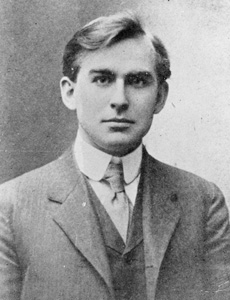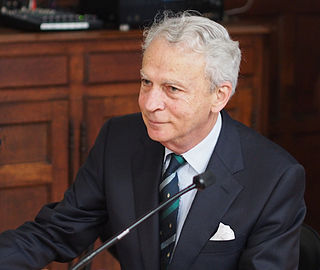External links
- Arthur E. Gordon at the Database of Classical Scholars
Arthur Ernest Gordon (October 7, 1902 -- May 11, 1989) was an American classical philologist and epigraphist.
Born in Marlborough, Vermont, Gordon studied classical philology at Dartmouth College, receiving his bachelor's degree in 1923. He continued his studies at the American Academy in Rome. In 1925 he became a lecturer in Latin at Dartmouth College and in 1928 at Western Reserve University. He received his Ph.D. from Johns Hopkins University in 1929, where he worked with Tenney Frank, and afterwards briefly taught Latin and Ancient History at the University of Vermont. Gordon was invited to the University of California at Berkeley as Sather Professor for 1929, and upon the recommendation of Frank, the Classics Department appointed Arthur as Assistant Professor of Latin in 1930, where he taught for 40 years, and served as its chairman from 1953 to 1959. During his 1948/1949 sabbatical, Gordon received a fellowship at the American Academy in Rome. In 1952 he was president of the Philological Association of the Pacific Coast. From 1955 to 1956 he was a Guggenheim Fellow and Fulbright Fellow. After retiring, Gordon taught at college in Ashland, Ohio and at Ohio State University.
He was married to Joyce Anna Stiefbold, who appeared as co-author in some of his publications.
Gordon applied his knowledge of Latin inscriptions to Latin grammar, the precise knowledge of which was the focus of his teaching. Gordon was also involved in the publication of Latin inscriptions in the Corpus Inscriptionum Latinarum .
Edward Dahlberg was an American novelist, essayist and autobiographer.

Thomas Robert Shannon Broughton, FBA was a Canadian classical scholar and leading Latin prosopographer of the twentieth century. He is especially noted for his definitive three-volume work, Magistrates of the Roman Republic (1951-1986).
Frank Edward Brown was a preeminent Mediterranean archaeologist.
Lily Ross Taylor was an American academic and author, who in 1917 became the first female Fellow of the American Academy in Rome.
Wing-tsit Chan was a Chinese scholar and professor best known for his studies of Chinese philosophy and his translations of Chinese philosophical texts. Chan was born in China in 1901 and went to the United States in 1924, earning a Ph.D. from Harvard University in 1929. Chan taught at Dartmouth College and Chatham University for most of his academic career. Chan's 1963 book A Source Book in Chinese Philosophy was highly influential in the English-speaking world, and was often used as a source for quotations from Chinese philosophical classics.

Benjamin Ide Wheeler was a professor of Greek and comparative philology at Cornell University, writer, and President of the University of California from 1899 to 1919.

Tenney Frank was a prominent ancient historian and classical scholar.
Attilio Degrassi was an archeologist and pioneering Italian scholar of Latin epigraphy.
Jakob Aall Ottesen Larsen was an American classical scholar. He was known principally for his research on the political status of Ancient Greece.

Hans-Werner Janssen was an American conductor of classical music, and composer of classical music and film scores. He was the first New York born conductor to lead the New York Philharmonic. For his film work he was nominated for six Academy Awards.
Dr. Robert W. Winter was one of California's leading architectural historians. He was the Arthur G. Coons Professor of the History of Ideas, Emeritus, at Occidental College, Los Angeles. He is particularly known for his contributions to the history of the California branch of the Arts and Crafts Movement.

Varujan Yegan Boghosian was an American artist, best known for his sculptures and assemblages. Since 1958 he had held teaching positions at the University of Florida, Cooper Union, Pratt Institute, Yale University, Brown University and Dartmouth College. At Dartmouth, Boghosian was a member of the art faculty from 1968 to 1995. He was awarded an endowed position as the George Frederick Jewett Professor of Art in 1982. Boghosian retired from Dartmouth in 1995 and had since continued his work as a practicing artist up until his death.
James Frank Gilliam was an American classical scholar and historian of ancient Rome.

Ernest Carroll Moore (1871–1955) was an American educator. He co-founded the University of California, Southern Branch, in Los Angeles, California.

Brian Stock is a historian. He is a historian of modes of perception between the ancient world and the sixteenth century. He was Rouse Ball Student at Trinity College, Cambridge, and Senior Fellow at the Pontifical Institute of Mediaeval Studies, Toronto, before joining the graduate faculty of the University of Toronto, where he taught history and literature until 2007. He is a Canadian and French citizen.
Robert Malcolm Errington, also known as R. Malcolm Errington, is a retired British historian who studied ancient Greece and the Classical world. He is a professor emeritus from Queens University Belfast and the University of Marburg.

Anna Marguerite McCann was an American art historian and archaeologist. She is known for being an early influencer—and the first American woman—in the field of underwater archaeology, beginning in the 1960s. McCann authored works pertaining to Roman art and Classical archaeology, and taught both art history and archaeology at various universities in the United States. McCann was an active member of the Archaeological Institute of America, and received its Gold Medal Award in 1998. She also published under the name Anna McCann Taggart.
Myra L. Uhlfelder (1923-2011) was a professor of classics at Bryn Mawr. She is known for her work on classical and Medieval Latin.
Antonia Jane Reobone Syson was a British-American classical scholar specialising in the study of Virgil's Aeneid.
Edith Frances Claflin was an American linguist, a noted scholar of Latin and Greek.